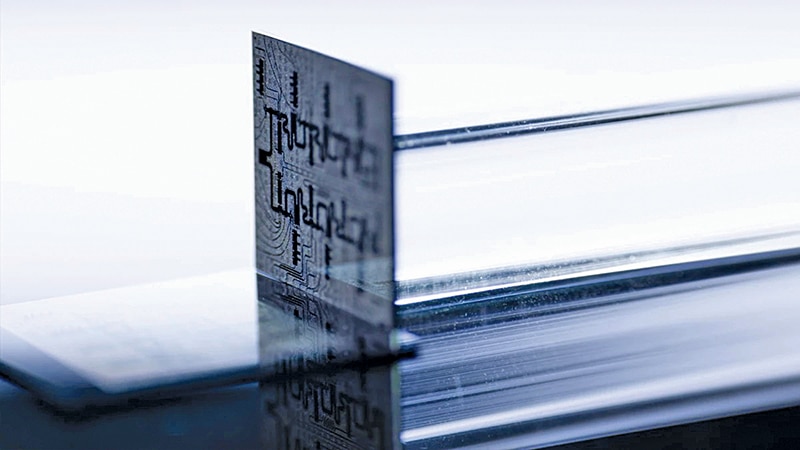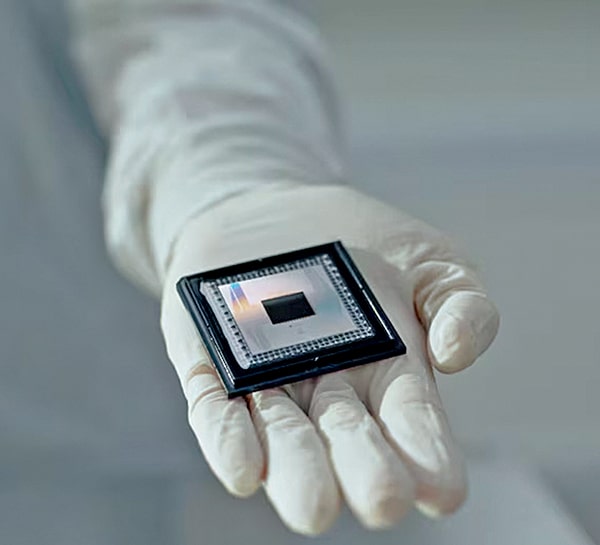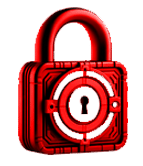Meet the newest entrants to the quantum computing race—Google’s Willow, Microsoft’s Majorana 1, and Amazon’s Ocelot, which take us closer to the possibility of a commercially-viable large quantum computer.
Those interested in quantum computing know that there is constant activity in the space—research and development, government policies, investment, and more. However, when there is a wave of announcements from big tech companies, everyone notices—even the non-techies.
The unveiling of quantum chips by Google, Microsoft, and Amazon, in quick succession, has garnered a lot of media traction, suddenly making quantum computing a coffee table topic. This buzz has made people more aware of what quantum computing can do—and awareness has the potential to accelerate a technology’s journey to the mainstream.
Why are companies so keen on developing fault-tolerant large quantum computers? Is it because they can outperform classical computers? Yes, they can. But more than that, quantum computers have massive parallel processing ability far beyond the reach of classical supercomputers because their basic building block—a qubit—can hold multiple states, unlike a traditional bit confined to 0 or 1 (that is, on or off). This gives them a unique edge in solving problems with multiple potential outcomes.
Problems like this abound in fields like optimisation, materials science, cryptography, artificial intelligence (AI), machine learning, sensing, telecommunications, and finance.
Since the fundamental building blocks of the universe, at the atomic and subatomic level, are governed by the principles of quantum mechanics, quantum computing helps simulate natural processes like protein folding, molecular formations, photosynthesis, and superconductivity. This helps in disease profiling, drug discovery, clinical trials, crop management, weather modelling, and more such essential activities.

Plus, the surge in interest in AI is further fuelling the interest in quantum technology because the relationship between these two technologies is synergetic.
AI can help solve problems like error correction and scalability in quantum computing while quantum computing grants AI the extraordinary power to solve so-called ‘intractable’ mathematical problems and enhance trend analysis and prediction without relying on brute force (aka mammoth, energy-guzzling data centres).
We do have dozens of quantum computers functioning across the globe, mainly in research labs and data centres. Companies like IBM, D-Wave Systems, Microsoft, Rigetti Computing, Intel, IonQ, Amazon, and Google are offering quantum computing on the cloud, enabling businesses and researchers to use quantum computing facilities on a subscription basis.
However, quantum computing is still a very hallowed space because of the complexity involved in building, housing, and maintaining the hardware.
The quantum computing ecosystem is constantly striving to make fault-tolerant, large-scale quantum computers that are more viable and accessible for commercially-relevant applications. With favourable government policies and increasing interest and investment in the space, we are seeing a lot of interesting developments—all of which we hope to cover in the coming issues.
For now, let us catch up with the recent buzz around Google’s Willow, Microsoft’s Majorana 1, and Amazon’s Ocelot.
| Understanding quantum computing and its challenges |
| • Classical computers are made of transistors, which are switches with the ON and OFF states translating to so-called bits with the states 0 and 1. By combining these switches, it is possible to realise gates like an AND gate with two switches in series or an OR gate using these switches in parallel. Stacking these gates sequentially we can build up complex circuits or processors, which are our classical computers. • Quantum computers are different. The basic building block of a quantum computer is a qubit. This qubit also has two definite states, but also has superposition states. That is, it can be in state 0 and 1 at the same time. When we consider the possibility of forming quantum gates and expanding the superposition to multiple qubits, which is called entanglement, the possible state space of such a machine becomes enormous. • To put things in perspective, eight bits in a classical computer can represent any number between 0 and 255, but eight qubits of a quantum computer can represent every number between 0 and 255 at the same time. So, around 256 qubits would be enough to represent more numbers than the number of atoms in the universe. • In a classical computer, when we have a logic operation between two bits, for example, a NOT gate, we get one of four possible discrete values. However, a quantum bit or a qubit can take on all values between 0 and 1, an infinite number of them. So, a simple controlled-NOT (CNOT) gate can sample an infinite number of qubit values. The output of the CNOT is probabilistic, and we run the operation hundreds of times to measure the most probable outcome. So, the input is infinite valued, and the output is probabilistic. • A quantum computer is hence capable of massive parallel computing beyond the capabilities of today’s classical computers. • In an actual quantum computer, physical systems, such as the spin of an electron or the orientation of a photon, are used to store qubits. These are fragile systems that are easily affected by factors such as disturbances in the earth’s magnetic field, radiation from devices in the vicinity, heat, neighbouring qubits, and so on. These factors, which affect the information in a qubit, are known as ‘noise.’ • Unfortunately, even reading or accessing a qubit amounts to noise! Noise can cause the information in the qubits to change or even fade away! This is known as decoherence. • Noise and resulting decoherence are two of the biggest hurdles in the way of quantum computers. The task of mitigating the effect of noise is known as quantum error correction—and is the main challenge on the table today! (As explained by experts in “Quantum Computing, Coming Faster Than You Think,” Electronics for You, November 2022, https://www.electronicsforu.com/technology-trends/quantum-computing-coming-faster-than-you-think) |
The Second Milestone in Google’s Quantum Roadmap
Google is working towards building a useful, large-scale quantum computer with a six-milestone roadmap, which starts with demonstrating beyond-classical capabilities, going on to error correction, building a long-lived logical qubit, creating logical gates, scaling up, and finally, a large error-corrected quantum computer.
They crossed the first milestone in 2019 when they demonstrated Sycamore, a 54-qubit superconducting quantum processor. It took just 200 seconds for a task that would have taken a state-of-the-art supercomputer 10,000 years to complete. This clearly established the unique capabilities of quantum vis-a-vis classical computing.

In December 2024, Google showcased Willow, a 105-qubit quantum chip that excels in performance and error-correction, the second milestone on their roadmap.
Performance
Willow performed a random-circuit sampling (RCS) benchmark computation in under five minutes, which would have taken today’s best supercomputers around 10 septillion (1025) years to solve. Quantum benchmark tests help to determine whether a system qualifies as a quantum computer or whether it is slipping into the classical realm and how well it performs compared to the theoretically expected values in a noise-free quantum computer. RCS is one such quantum benchmarking system developed by Google, which involves executing a random quantum circuit (layers of gates) to generate output bitstrings, forming a high-dimensional probability distribution beyond the capabilities of classical simulation.
Error correction and other achievements








